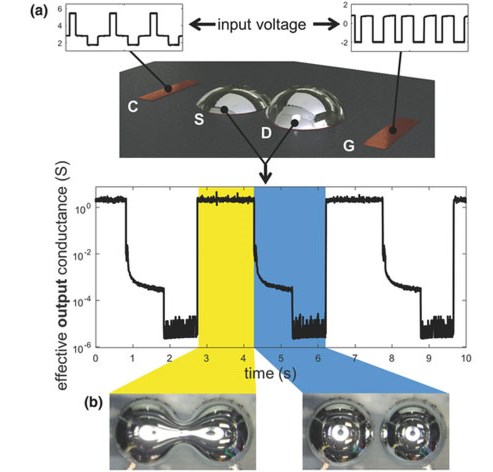The new material is a non-toxic alternative to mercury and engineers of the North Carolina State University discovered it can be used for liquid metal transistors. It's still early days but perhaps some day this sort of material will result in devices with physically reconfigurable circuits. For example, it could be used to reassemble parts that are damaged, or to "morph" aspects of robots to gain other functions. Liquid metal Terminators, anyone?
As Phys.org succinctly explains, “fluidic transistors work by opening and closing the connection between two liquid metal droplets. When a voltage drop is applied in one direction, the droplets move towards each other and coalesce to form a metallic bridge for conducting electricity. When voltage is applied in a different direction, the droplets spontaneously break apart and turn the switch to open.” Only a small voltage is required to flip the liquid metal between open and closed switch state, so it can operate like a transistor. Behind the behaviour of the liquid indium and gallium alloy is a phenomena called capillary instability.

Via: Hexus